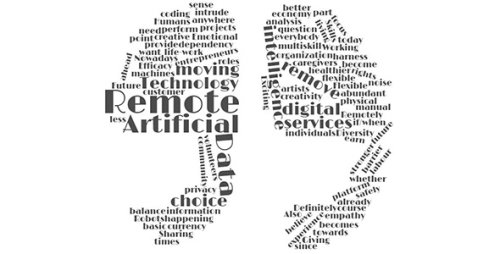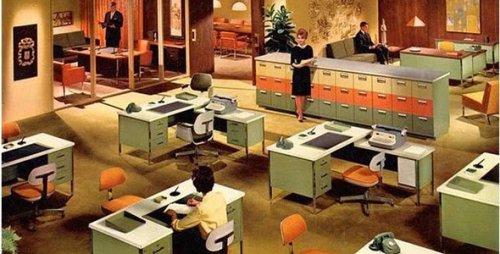Adapt or die: what makes a workplace future-proof?

There are 6.5 million people living in Rio de Janeiro, the city close to which I grew up. Sadly, there are not nearly as many jobs available. I have seen people struggle and fight to build a future for themselves and that is why I am so intrigued by the dynamics of the job market and the workplace. What needs to change?
Back in Brazil, I started out working closely with entrepreneurs and young jobseekers. Nowadays, I am an Innovation Consultant at ING in Belgium. What I did in Brazil and what I do today here in Europe centres around the same questions: how will our workplace evolve, and how will technology shape the way we work and live?
This topic is often referred to as “The Future of Work”. A lot has been said and published about this hot topic, and I soon noticed that the perspectives were always different from each other, and depended a lot on the context they were in. That mix of opinions triggered my curiosity. For this reason, I decided to clarify what "The Future of Work" really means by reading about it, talking to experts and participating in debates. I am happy to share my findings with you.
What is the Future of Work?
During my quest to further investigate the future of work, I asked my LinkedIn network the following question: "What is the first thing that comes to your mind when you hear the term “Future of Work”?
Here are the main answers that came up:

The truth is, there is not just one angle we can look from when talking about The Future of Work. It can be divided into (at least) three topics:
Technology: AI, automation of work, and future jobs. Will we have enough jobs for everyone with the automation we can see happening? What are the jobs of the future?
Changing models for work: What is the development of Independent work, gig economy, outsourced services and evolved work models (such as remote working)?
The workplace of the future: how will the current management models change, and how will workplaces evolve? Which organizations will succeed?
There are also other topics, which are consequences of the three points above, such as job inequality, economic development, etc. Nevertheless, for the remainder of this article, we will focus on topic 3. Here you can find the article dedicated to the first topic.
Changes in the workplace in the past years
The idea of what the workplace is about has changed over time. Between the 1970s and 1990s, organizational models were highly hierarchical, and still based on management principles from the beginning of the century. One of the most recognizable principle comes from Frederick Taylor, mostly known for his "scientific management" theory. Taylor defended the idea that thinking work should be separated from doing work. That is, managers should think and strategize, while employees should focus on getting things done.
Offices, then, were designed to suit this way of working, with a predomination of cubicles and c-suites with closed doors. Employees were encouraged to work separately and to stay focused. Decision-making was left to the closed rooms that accounted for the presence of the “thinkers”.

Source: The Steelcase Coordinated Office Approach from an advertisement for Steelcase, Inc. appearing in the November 1964 issue of Fortune.
With the arrival of the 21st century and technological development, things started to change: The modern workplace became all about social collaboration. The silos were broken down, open spaces started to appear, and bosses and employees began to work side by side. Employees started to get more involved in decision-making processes, and hierarchy began to disappear or at least decrease.
With the evolution in the workplace, new proposals of management models and theories started to appear. The image of a successful organization has gradually become associated with the implementation of a less rigid hierarchy and with employee empowerment. Organizations that continued to follow the more traditional methods are increasingly being called “old school”. We have started to see new buzz words and names coming up. Some organizations, such as Zappos, are implementing Holacracy. ING Belgium started its agile transformation last year .
So what is it that makes a workplace future-proof?
Last year, while I was looking at my next career move, I came across a book called Reinventing Organizations, written by Frederic Laloux. Back then, I was interested in understanding the definition of a future-proof organization, and how to decide which one I should join. This book ended up being a very interesting discovery for me, and gave me a better understanding of what I should look for.
According to Frederic, the "workplaces of the future" share four main characteristics:
Self-management: Teams work together autonomously. This means no more managers. Management responsibilities are rotated, and decisions are made by reaching consensus.
Evolved Roles and Fluid Structures. Job titles no longer exist. Nor do employees. You, as a professional, decide where and when you work based on your expertise and experience. This can be in more than one team, or even more than one company.
Wholeness: The idea is simple: come as you are. You can be yourself at work. This is one of my favourite characteristics: Being able to be who I am, to wear whatever I want, and to be respected for my ideas and opinions, is what still makes me show up at work every day with a smile on my face.
Organizational purpose: Working for a company that strives for a goal in which the employees believe will bring out the best in those employees. There have been numerous studies that prove that this key to a company’s success.
The next steps in building the future of the workplace
With all these new concepts coming towards us, the one-million-dollar question that remains is: How do we manage this transition to future workplaces, and how do we get ready for the challenges we will face?
In the end, two things are certain:
First, Change is the only constant. The only way to know what works and what doesn’t is by trying things out. Organizations which are not afraid to fail will be always one step ahead.
Second, with the changes we've seen in the past years, we can agree that this is the end of organizations and workplaces as we know them. However, there are still many exciting new concepts to emerge.
About Dafne
Dafne is a bit of a sports freak – she especially likes lifting weights. Experimenting new types of food or travelling with friends to new places and living like a local as much as possible are also high up on her list of favourite things to do. And as one book does not satisfy her curiosity enough, she likes reading three books at the same time! That same curiosity comes in handy at work. She is constantly exploring new tech and running pilots to see how it can benefit the customer. You can find her on Linkedin.

